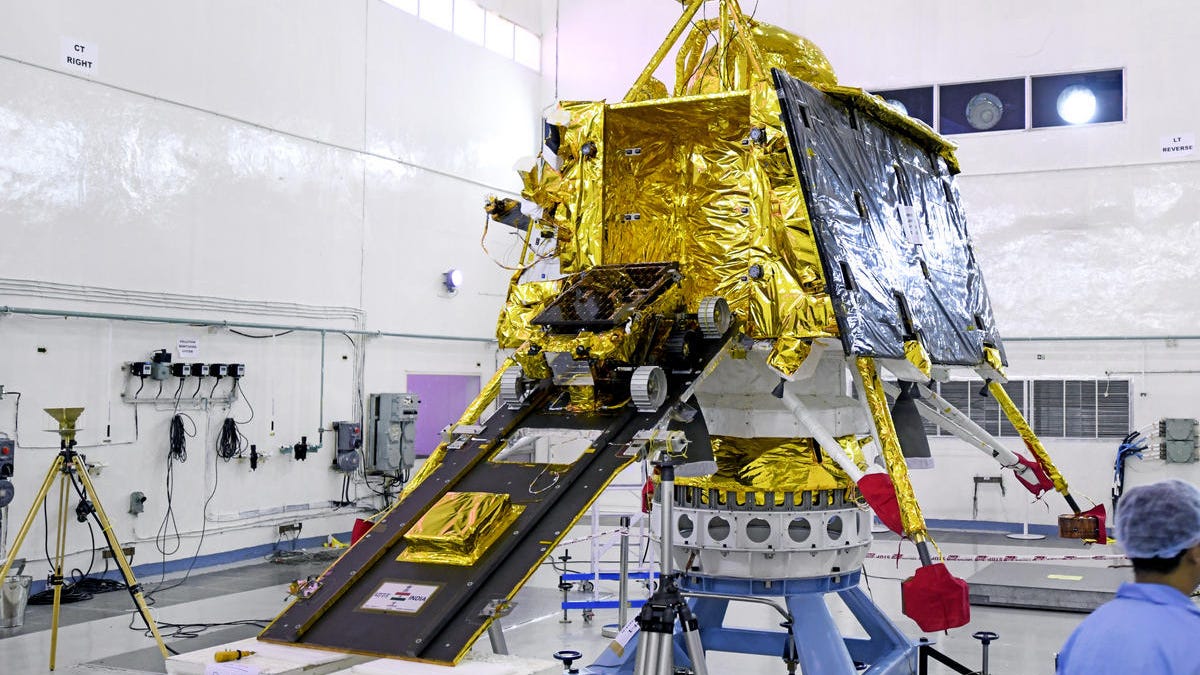India's Chandrayaan-2 Vikram moon lander status a tense mystery
India's attempt to become only the fourth country to successfully soft-land on the moon doesn't look good.
The moment of truth arrived on Friday for India's Chandrayaan-2 mission to the moon, and it didn't go entirely as planned.
After blasting off in July and snapping some gorgeous moon photos on the way, the Indian Space Research Organization's (ISRO) Vikram lander attempted a descent to the moon's unexplored south pole starting a little after 1 p.m. PT.
The lander, with a rover on board, seemed to have completed its landing process up a point, but communication was lost and the lander's status is currently uncertain.
ISRO livestreamed the view from mission control. India had hoped to join an exclusive club of moon soft-landers, which includes the US, China and the former Soviet Union.
The Vikram lander made it through the rough braking phase that slowed the lander and helped to lower it toward the surface. It then went into a fine-braking phase, but updates from the lander came to a halt shortly after that. ISRO says it's analyzing the data up to that point.
India's prime minister and space fans took to Twitter to offer encouragement to the Chandrayaan-2 team and also mourn the probable loss of the lander.
"These are moments to be courageous, and courageous we will be," tweeted Prime Minister Narendra Modi.
India is proud of our scientists! They’ve given their best and have always made India proud. These are moments to be courageous, and courageous we will be!
— Narendra Modi (@narendramodi) September 6, 2019
Chairman @isro gave updates on Chandrayaan-2. We remain hopeful and will continue working hard on our space programme.
"We are still proud of our scientists," wrote Twitter user Suraj Kumar.
We are still proud of our scientists. #Chandrayaan2 #ISRO 🇮🇳
— Suraj Kumar (@SurajKu18732817) September 6, 2019
Wrote stand-up comedian Sridhar V, "Never thought I'd see the day when families across the nation would be tuned into their TVs watching a space mission at 2 a.m. in the night. You're already a winner ISRO. At the very least, tonight, you've inspired many a young mind. Well done."
Never thought I’d see the day when families across the nation would be tuned into their TVs watching a Space Mission at 2am in the night.
— Shridhar V (@iimcomic) September 6, 2019
You’re already a winner ISRO. At the very least, tonight, you’ve inspired many a young minds. Well done 🙏🏻👏🏻#Chandrayaan2Live
Chandrayaan-2 featured three unique space machines: an orbiter, a lander and a rover. The orbiter and the lander, which contained the rover, separated from one another on Sept. 2.
In total, the mission includes 12 payloads, with five on the orbiter and lander and two on the Pragyan rover. The orbiter remains healthy, but the lander and rover's status are not yet known.
This was to be the first mission to land near the moon's fascinating south pole. Water ice deposits have been seen in this region of the moon, and ISRO wanted to better understand their composition.
The Vikram lander was meant to operate for a single lunar day (around two Earth weeks), while the orbiter should continue to operate for a year in a circular orbit. Even if the lander failed, the orbiter will still carry forward the science torch for the Chandrayaan-2 mission.
Landing on the moon is fraught with risk, as Israel's Beresheet mission discovered when its spacecraft crashed during a soft-landing attempt earlier in 2019. The Beresheet team vowed to try again, but we'll have to wait for updates to know what has ultimately happened with India's efforts.
Originally published Sept. 3.
Update, Sept. 6, starting at 1:56 p.m. PT: Adds that status of lander is unclear and will be updated as more information becomes available.




